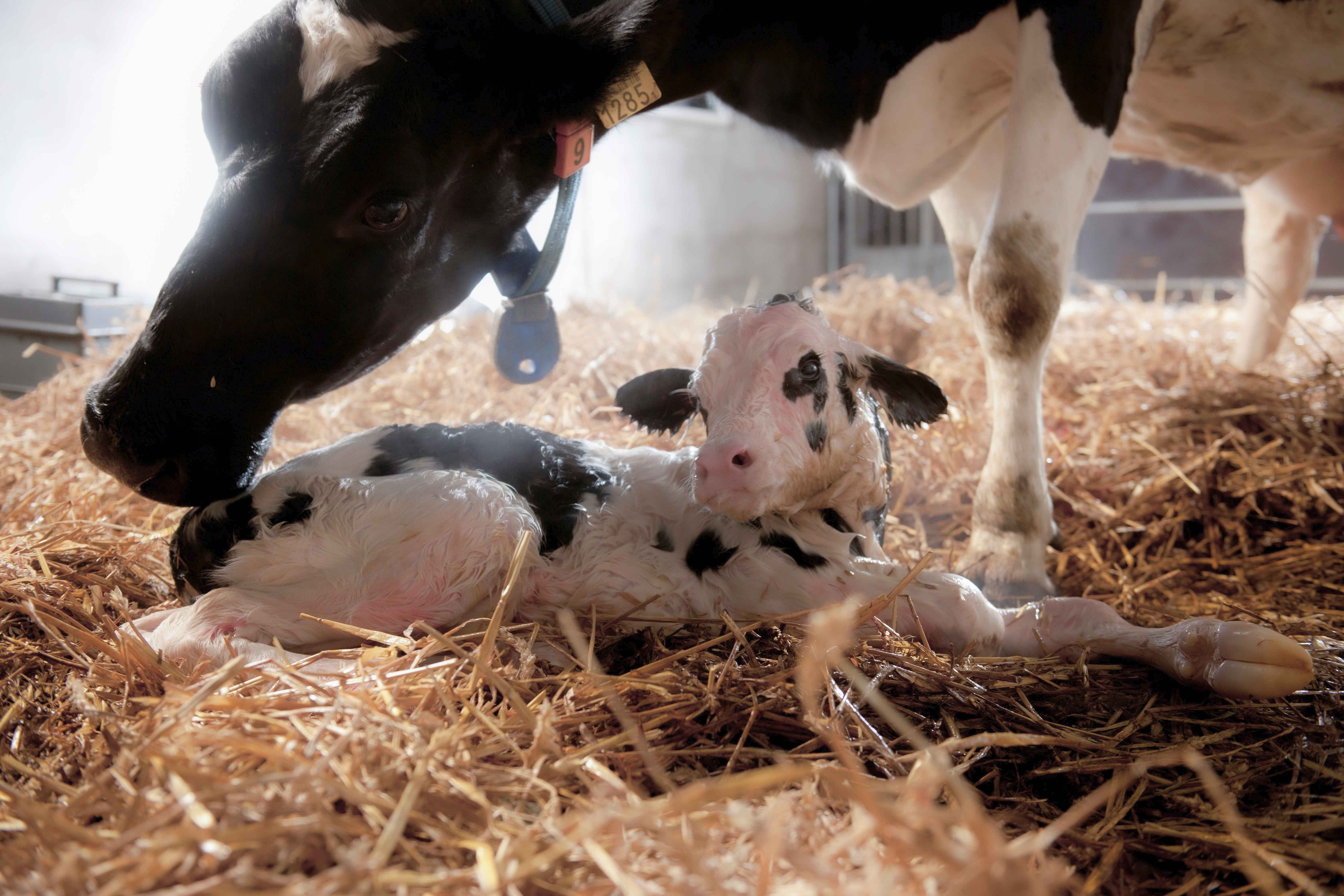In 2005, 15 percent of the calves born from redand-white heifers were stillborn. For black-and white heifers, this was 13 percent. By 2024, the stillbirth rate had decreased to just 9 percent for both red-and-white and black-and-white heifers.
The decline in calf mortality over the years shows a slight upward trend in the percentage of live-born calves.
According to researchers at AEU, the improved results in heifer calvings are partly due to better management. However, breeding has also made an important contribution to enhancing vitality.
AEU calculates breeding values for vitality and stillbirth rates. Bulls with high vitality breeding values are known to sire daughters that lose fewer calves at birth.
Breeding has also made an important contribution to improved calf vitality, as shown by the development of the vitality trait. This trait indicates how vital a calf is: calves that score well on vitality tend to survive better. The reduction in stillbirth rates is beneficial for both red-and-white and blackand-white calves.
CRV Health, in addition to the three main categories of hoof health, udder health, and fertility, also includes calving and vitality traits. Selecting and breeding for CRV Health traits, therefore, results in more live-born calves. Bulls that score highly for CRV Health are, for example, Delta Splendor P, Delta Lorenzo P-Red, and T-Spruce Stinger.
In twenty years, 6 percent more live-born calves from heifers

The percentage of live-born calves in the Netherlands and Flanders from Holstein heifers has increased significantly over the past twenty years, from 81 percent in 2005 to 87 percent for black-and-white and 91 percent for red-and-white. This is evident from calculations by the Animal Evaluation Unit (EU department CRV) based on calving records.
